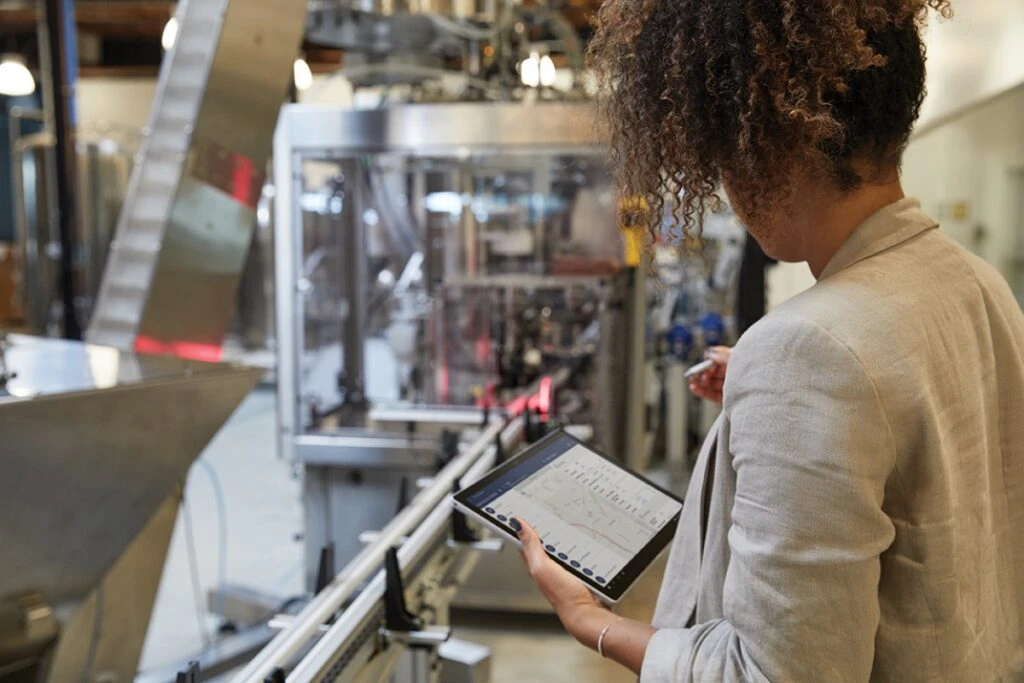
Microsoft Cloud for Manufacturing: 3 ways to transform your manufacturing workforce
To keep up with the fast pace of digital manufacturing trends, today’s manufacturers need to build a capable workforce that can adapt quickly to new ways of working. However, studies show that many manufacturers are concerned about the challenges of attracting, retaining, and training effective employees. Only 60 percent of manufacturing chief financial officers say that they’re confident in their company’s ability to retain critical talent—and less than half are confident that workers are building skills for the future.1
In this environment, manufacturers are looking for tools that will help them close the skill gap and boost employee productivity. In part one of our on-demand webinar series, we discussed how Microsoft Cloud for Manufacturing enables manufacturers to engage with customers in new ways. Watch the second installment of the series, Microsoft Cloud for Manufacturing: Part 2 – Transform Your Workforce, to explore how manufacturers can drive workforce transformation and help their workers be more productive from anywhere. We’ll discuss ways to accelerate innovation while empowering frontline workers and building a safer work environment. Plus, you’ll hear about some of the Microsoft Cloud for Manufacturing capabilities that are already helping some of our manufacturing customers—like Chevron and Alcoa—transform their workforce.
You’ll also learn more about Microsoft Cloud for Manufacturing, now available for preview. Explore how this industry-tailored cloud platform helps manufacturers build a more resilient and sustainable future by more securely connecting people, assets, workflow, and business processes. This end-to-end solution includes capabilities designed to empower workers to collaborate from anywhere, which leads to increased productivity. Our ecosystem of industry partners extends the value of Microsoft Cloud for Manufacturing with innovative solutions that can help manufacturers address even the most difficult workforce challenges.
Three ways to drive manufacturing workforce transformation
The pandemic triggered manufacturers to invest heavily in digital manufacturing, from smart factories and IoT platforms to cloud computing and advanced analytics. Despite these investments, many manufacturing frontline workers—who represent the backbone of manufacturing operations—feel like they’ve been left behind. In fact, 36 percent say that they don’t have the right digital tools or technology to do their job effectively, and 54 percent feel like they’ve been learning on the fly with no formal training.2
In this climate, it’s critical for manufacturers to address the skill gap and keep up with the complexities of digital manufacturing. Microsoft Cloud for Manufacturing is helping manufacturers transform their workforce in three specific ways:
- Connect and empower manufacturing frontline workers. Manufacturers can empower their frontline workforce with digital tools and modern devices that enable real-time communication and collaboration.
- Enhance training for a better future. To build a more resilient and sustainable future, manufacturers need to identify skill gaps and equip frontline workers with the skills and training they need to succeed—all while providing easy access to knowledge across the organization.
- Improve worker wellness, health, and safety. Digital manufacturing solutions can help promote a safer work environment. By reducing manual effort through automation, manufacturing organizations can optimize production and profitability while ensuring health and safety requirements are met.
Discover how Microsoft customers are promoting collaboration
Manufacturing organizations are tapping into Microsoft solutions to drive workforce collaboration, streamline communications, and increase productivity to grow their businesses.
For example, Chevron refined its digital workplace and increased global efficiency with Microsoft Teams. “Teams ushered in an open communications model where everybody can present their ideas in an immediate and transparent way,” says Cory Smithson, Head of Supply and Trading Information, Chevron. Smithson leads the 350 IT professionals who support 200 systems and apps used by Chevron Supply and Trading (S&T) to ensure the most efficient, cost-effective routes for delivering Chevron products to customers. “Compared to the past, where exchanges happened via phone calls or email between two people, now we have more inclusive, open discussions. Today, we arrive at better solutions, faster than we would have previously.”
Iceland-based Alcoa also uses Microsoft Teams to maintain around-the-clock operations and a safety-conscious culture. With varying schedules and new ways of working in place, Alcoa employees continue to stay connected and productive. “With Microsoft Teams, we’re able to share information with the entire factory at once,” says Friopjófur Tómasson, Pot Room Supervisor, Alcoa Iceland. “Without Teams, all the crucial information would have been spread across various platforms and difficult for people to find.”
Improve employee engagement to boost manufacturing productivity
If organizations want to increase manufacturing productivity, they need to embrace new ways to close the skill gap and enhance worker engagement. Manufacturers looking to transform their workforce must empower employees with modern digital manufacturing tools, automate processes to streamline employee tasks, ensure the health and safety of frontline workers, and offer better training and educational opportunities.
Watch our on-demand webinar, Microsoft Cloud for Manufacturing: Part 2 – Transform Your Workforce, to explore trends, insights, and strategies to accelerate manufacturing workforce transformation.
To learn more ways to improve employee engagement, get the Transforming the manufacturing workforce infographic.
1Latest findings from PwC’s Pulse Survey, PwC.
2Technology Can Help Unlock a New Future for Frontline Workers, Microsoft WTI.




